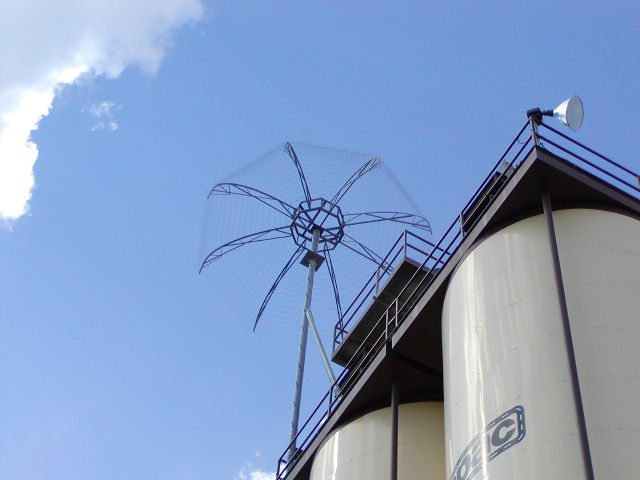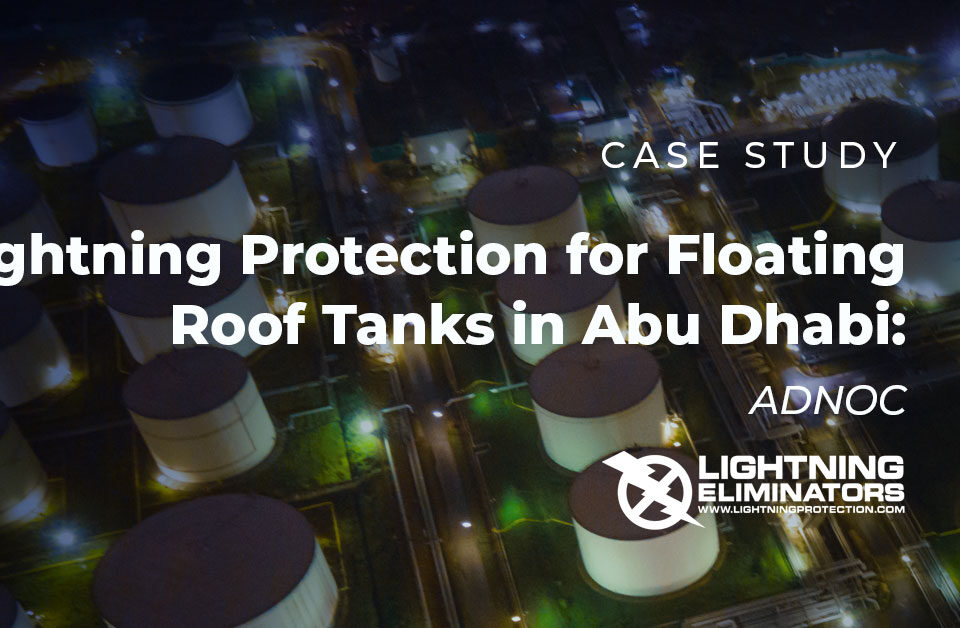- We Prevent Lightning Related Problems.

To Strike or Not to Strike, that is the Question: Is there more lightning or am I imagining it?
October 11, 2013
Non-Metallic Chemical Storage Tanks and Lightning Impact Mitigation: Problem Solved!
November 15, 2013Lightning: Collection vs. Prevention-The White Paper has Arrived

The Lightning Protection Blog by The Lightning Diva @ Large
In July we blogged about “Lightning Rods are Old: NEW Lightning Protection”. It was a three part blog which focused on different aspects of lightning protection over the last 3 centuries. We promised that a white paper was forthcoming…well here it is!
“Collection vs. Prevention” written by Lee Howard, Lightning Eliminators and Consultants, Inc. (LEC) Program Manager: Engineering Services / R&D and Smart Ground Testing with contributors from Hitachi, University of Colorado and additional experts from around the globe.
Charge Transfer Technology has been used as the preferred lightning protection systems all over the world by Global 500 companies effectively and successfully for over 40 years. To date there are close to 3500 installations in over 80 countries. Customers are extremely happy with the solution and swear by it. Before they installed it, they had lightning events. After they installed it they had none. And when properly maintained and inspected through the recertification program at LEC this remains the case. On several occasions, we have been told by our customers that they could see the difference when a storm rolled through the area. They could see lightning striking everywhere around their location except in the protected area. To date, LEC can boast an over 99% success rate and with the fraction of non-successes we can usually trace it back to lack of maintenance and or damage that was unknowingly incurred.
If you manufacture, handle or manage Oil, Gas, Chemicals, Nuclear Energy and any other combustibles, toxic and/or hazardous materials or are in an industry that absolutely cannot afford any downtime whatsoever, why would you want to collect a lightning strike into your environment? It would be like giving a burglar they keys to your house and saying “have at it!” Lightning does not discriminate and it only takes one strike. Considering my blog last week about lightning increasing around the world and all of the damage that has been incurred this summer due to direct strikes, which by the way has not stopped yet; in the past 2 weeks, lightning has struck 2 tank farms in Texas; one in Tyler and the other in Plum. Considering all the factors it is crazy not to consider the best way to protect your facility and to keep lightning as far away as possible from your facility.
If you have not considered lightning protection systems then you should. If you are using lightning rods and are unaware of other alternatives you should review them. The lightning rod is very simplistic and in fact not much of a technology at all and is close to 300 years old. Even if you avoid the strike, drawing current into the ground where it can damage your communications, electrical wiring and electronic equipment isn’t much of a solution and can also cost millions of dollars. Did you ever wonder why your equipment didn’t last as long as you projected? Well, it is because of all the lightning strikes around your facility and the current that is drawn into your environment through the ground and via the rods! These strikes contribute to the degradation of electronics throughout your facility eventually rendering them useless. Companies incur unforeseen costs that were not allocated for and in many cases operations are affected and facilities are forced to shut down without rhyme or reason.
Lightning Protection Systems
The typical lightning protection systems built by LEC are custom to the location and needs of the customer and take many factors into account. A Dissipation Array®System (DAS) is the key component to a lightning protection system and works with grounding and surge suppression to achieve a complete solution. These include the Chem-Rod®, Surge Protection Devices and SBI®. DAS is a proprietary product, so there is no standard governing it as standards are not product specific and there is no other manufacturer. Both the Chem-Rod and SBI are UL Listed.
So, with my good wishes, herewith the new white paper “Collection vs. Prevention” which focuses on the mainstream types of lightning protection available to industry. Remember, Prevent, don’t collect! Please feel free to email me if you have any questions. I am happy to discuss lightning and lightning protection with you anytime lightningdiva@lecglobal.com
Visit the Collection vs. Prevention home page to download the white paper now click here

